The beat of a drum rang out as the Confederate and Union soldiers took their positions on the battlefield. On one side the Union army appeared dressed in blue wool government-issued uniforms and carrying an American flag. On the other side the Confederates arrived in homemade outfits, most of which were brown, waving a Rebel flag. Both sides had their guns drawn.
Peering down the barrels of their rifles, the soldiers took aim at each other across the New Market Battlefield in New Market, Va. When they got close enough to shoot, they pulled their triggers without hesitation. Plumes of smoke billowed out with each shot, and the soldiers yelled with delight as they watched their opponents fall to the ground. Other soldiers rode through the battlefield on horseback and engaged each other with swords, while others fired cannons.
All relished in the thrill of the fight. The combat lasted about an hour before the Confederates overcame the Union troops, forcing them over a hill just as it happened on that very battlefield in 1864 during the Civil War. Only this time no one really died and nothing was really lost. This was a historical reenactment.
Authentic Reproduction
The Civil War reenactors began arriving for the Battle of New Market on Friday and prepared for a weekend stay. They set up their white primitive canvas tents on either side of the field and stoked campfires as rain poured down. The next morning, as the sun shined bright, the reenactors put on period clothing.
The men and women in the armies wore Union and Confederate military uniforms, while the civilian women and even the children donned outfits reminiscent of the 1800s.
“This is what you’d expect to see in 1862 in the Valley,” said David Childers, of Manassas, Va., and a member of the 4th United States Regular Infantry. “Everything’s pretty authentic. What you see is pretty much the way it was.”
As the time for an artillery skirmish approached, soldiers in the Union army practiced marching and removing the bayonets from their rifles. In the Confederate camp, soldiers blackened new “recruits” faces with a dark substance and shot a few rounds into the air. “Attention,” a Union commander yelled. “Present arms.” Off in the distance the sound of a band could be heard performing battle tunes, preparing to offer the soldiers a light-footed beat as they made their way on to the battlefield. “Turn ‘God Save the South,’” Rick Long, of the 46th PA Regiment Band and 17th Miss Regiment Band, told the Union musicians. “No southern tunes, except we’ll whistle ‘Dixie’ on queue when we have to.” The battle lines had been drawn.
Turning Back Time
After practicing their drills, soldiers on the Union side returned to camp to eat. Some cooked eggs and sausage over the campfires, while others smoked ham and stirred stews.
As they waited for their combat orders, the reenactors talked about history and shared in each other’s company. Rack Campbell and his son, Aaron, both of Fredericksburg and members of the 4th U.S. Infantry Co. I, sat outside of their tent and cleaned their rifles. The Campbells, who have been reenacting together for at least a handful of years, say they enjoy reenacting because it allows them to step back in time and let go of their worries.
“My family has lived in Virginia for 300 years almost, so we have a lot of roots here,” said Rack Campbell, 45. “We had family on both sides. … [Reenacting] gives us a feeble sense of what it must have been like for them. “It’s hard to explain to anybody who’s never done it,” he added, “but the first time you go out and 1,000 rifles go off. It’s as close to a time machine that you’ll ever find.”
A Better Understanding Of History
On the Confederate side, a group of soldiers from the 27th Virginia Volunteer Infantry Co. G sat in a circle and talked about why they think it’s important to keep Civil War history alive.
Dave Shields, 35, of Pittsburgh and a member of the 27th Virginia Infantry, said reenactors do not relive the war because they want to remember the negative aspects of it. They do it to have a better understanding of history.
“We see history for what is was,” Shields said. “We’re not here to deny it or glorify the hate aspect of it. We’re here because everyone in that war fought for what they believed in.”
Reenacting the war helps give people a better understanding of why things happened the way they did and what the climate of the country was like at the time, said Chuck Gerhart, 31, of Bridgeport, W.Va., and a member of the 27th Virginia Infantry.
“To really truly understand what was going on, you have to put yourself in that time,” Gerhart said. “What was the world like? How did they live?”
History Of The Real Battle
The Battle of New Market was one of nearly 400 significant battles that took place during the Civil War, which occurred from 1861 to 1865, and one of several battles fought in Virginia’s Shenandoah Valley.
The conflict took place on May 15, 1864, and included 6,275 Union soldiers under the command of Franz Sigel and 4,090 Confederate troops under the command of John C. Breckinridge. More than 250 Virginia Military Institute cadets also fought in the battle on the Confederate side.
In drenching rain, the soldiers and cadets met on the New Market Battlefield, which was then an orchard and wheat field. As they trudged through the soggy field, many of the men lost their shoes in the mud.
As a result, the battlefield became known as the “Field of Lost Shoes.” The Union army lost 840 men in the battle and the Confederates lost 540 men. Ten VMI cadets also were killed or died later as a result of their wounds.
Time To Fight
Moments later, the commanders rounded up troops on each side, and the soldiers got into formations as they prepared to take to the battlefield. They lined up on either side of the field just as they did before. Only this time, instead of having to stick to the script of the New Market battle, the troops had their own game plans.
The Confederates charged into the field as the Union army fought back blasting their cannons and firing round after round at the enemy. Then a group of Union soldiers pushed forward in an attempt to overthrow the Rebels. But their effort was for naught. Many of the Union men died and the Confederates declared victory.
Return To The Present
On Sunday, when the battles were over and the weekend came to an end, the reenactors walked around the campsites one last time to take in the serenity of the area. They packed up their tents and other belongs, said farewell to their friends and vowed to see each other again soon on the reenacting trail.
“If you’re willing to travel five or six hours, you can do a reenactment every weekend of the year,” Childers said. “It’s a good way to spend some time.”
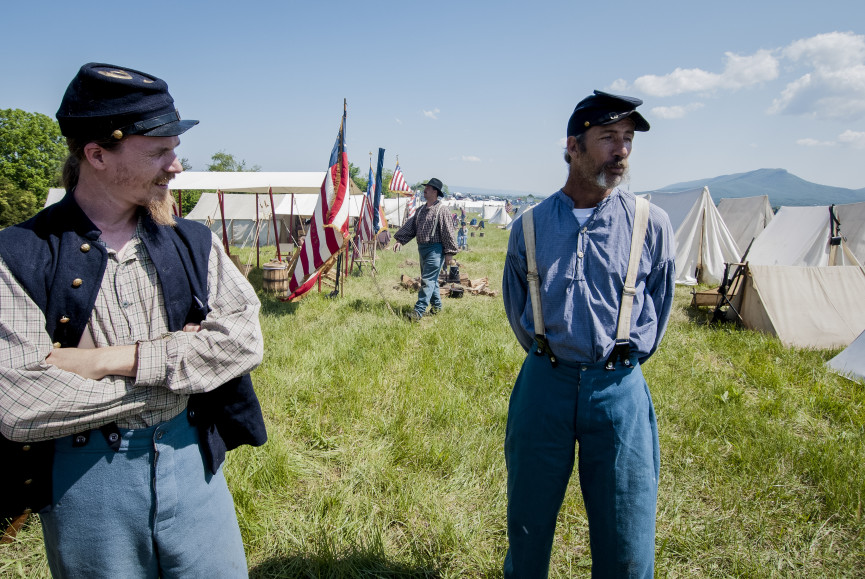
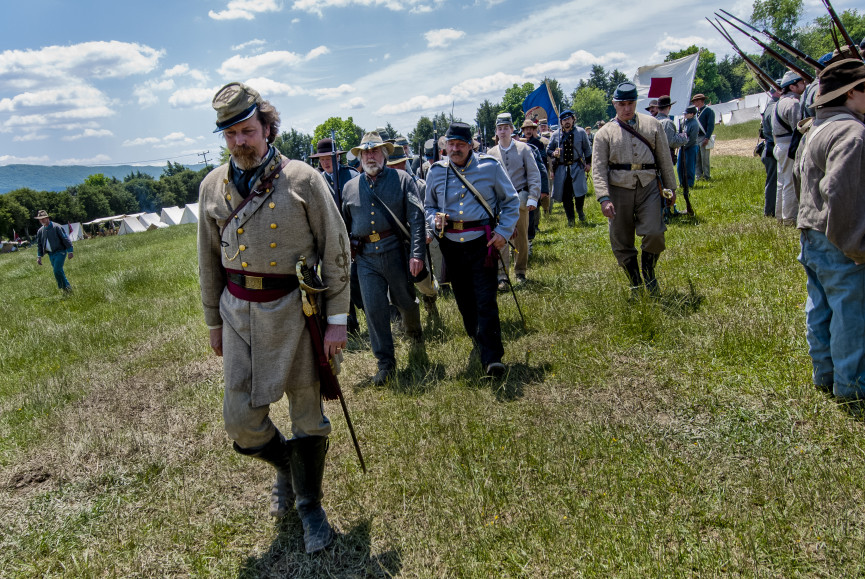
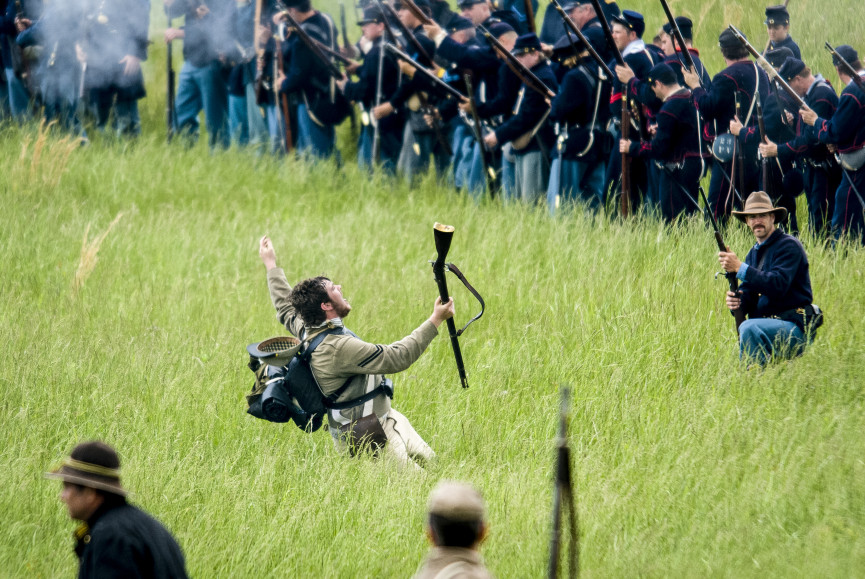
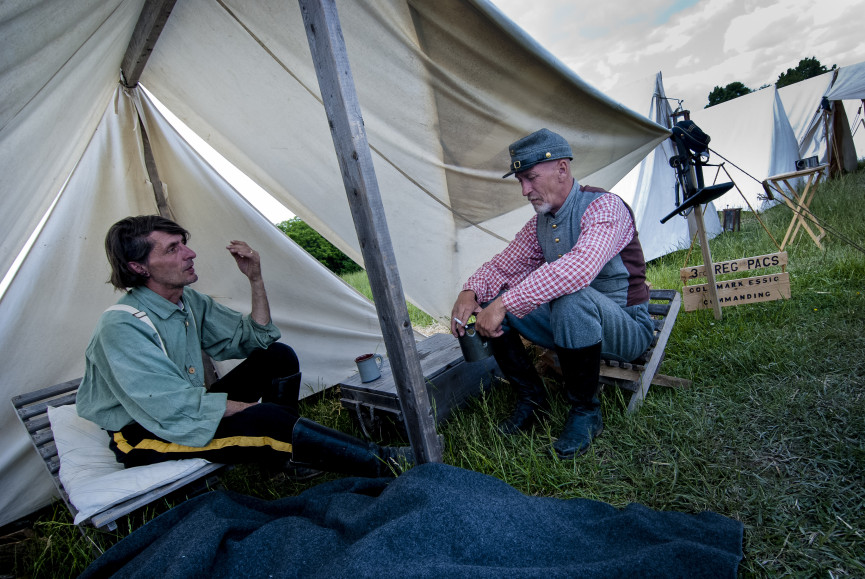
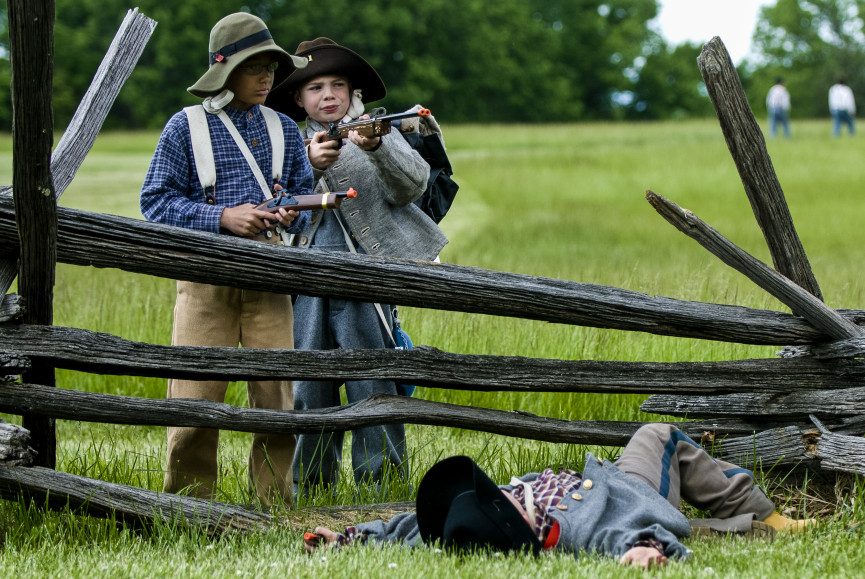
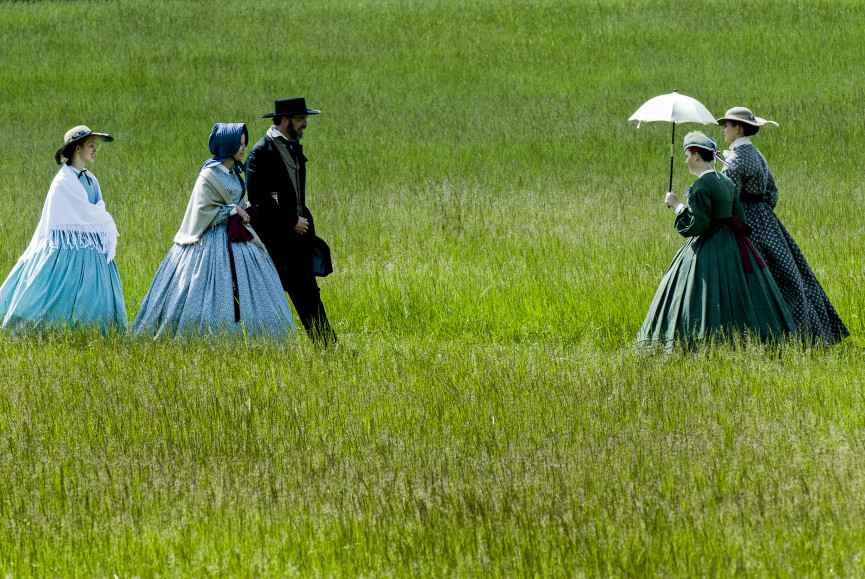
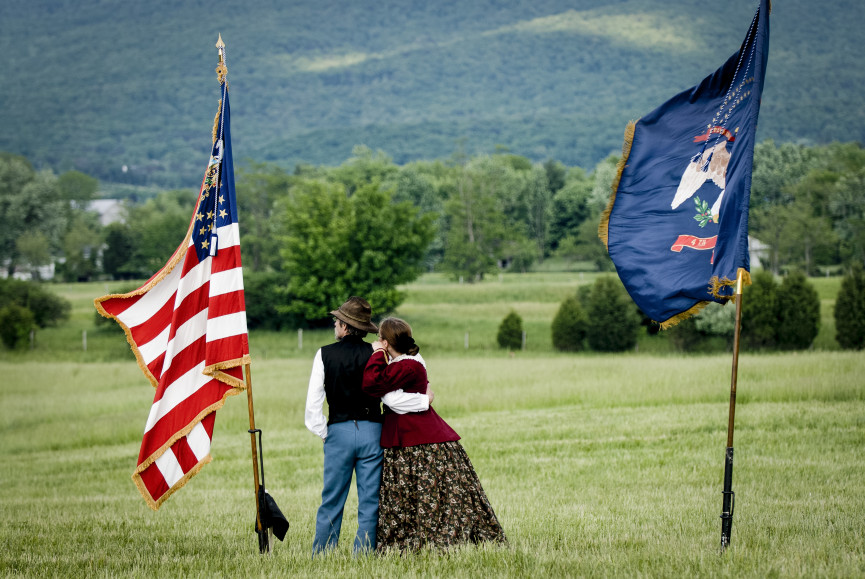
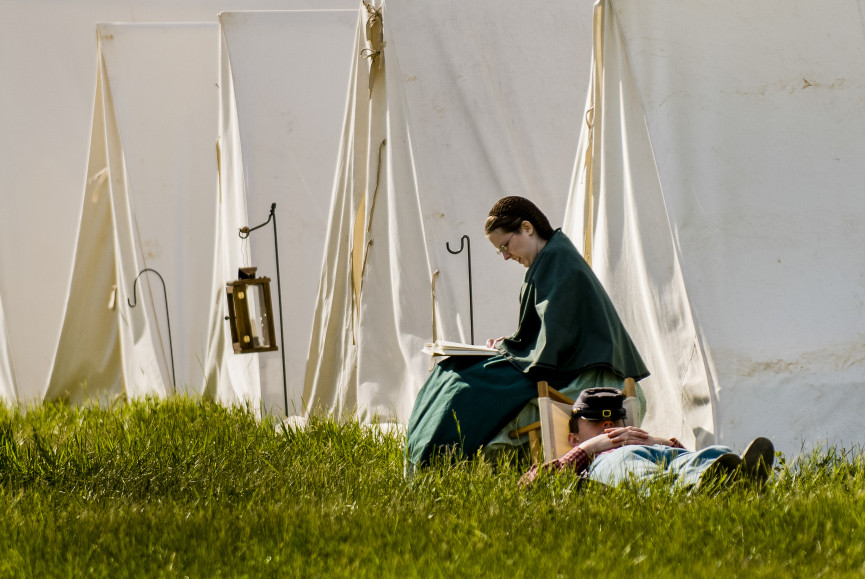
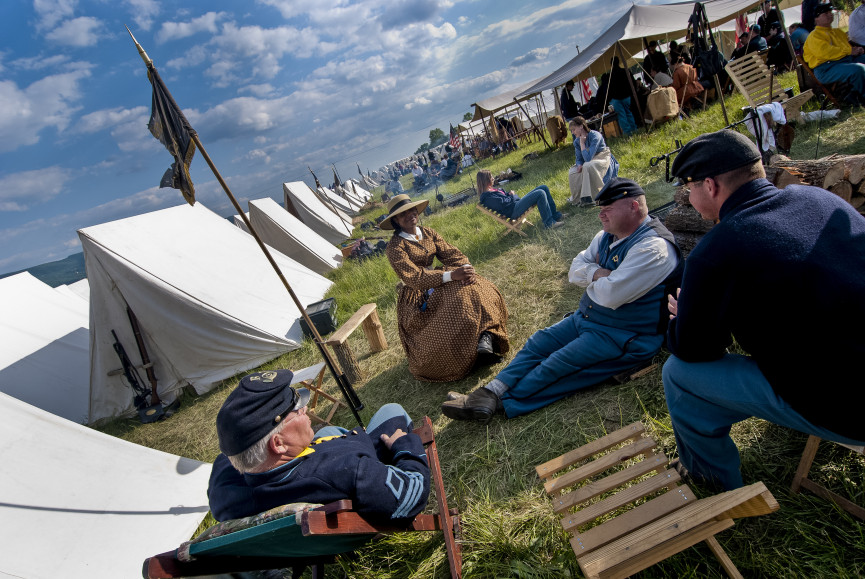
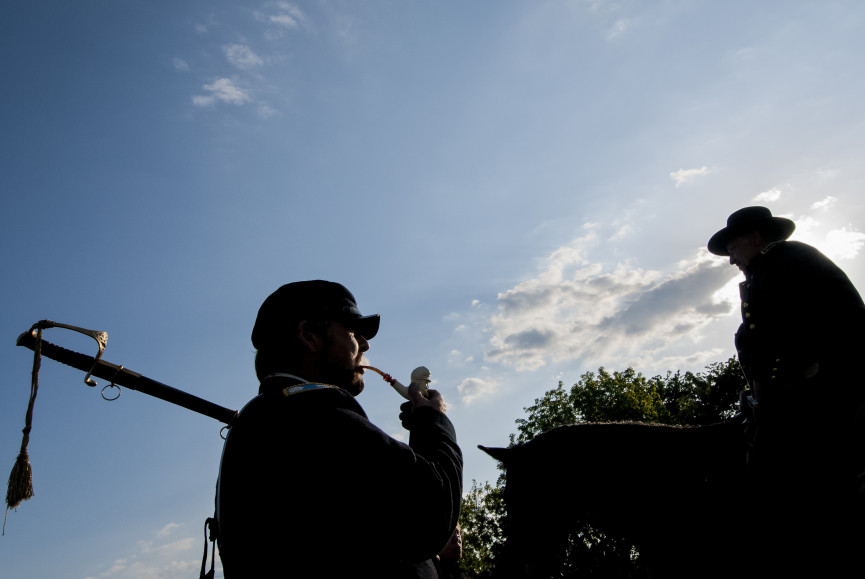
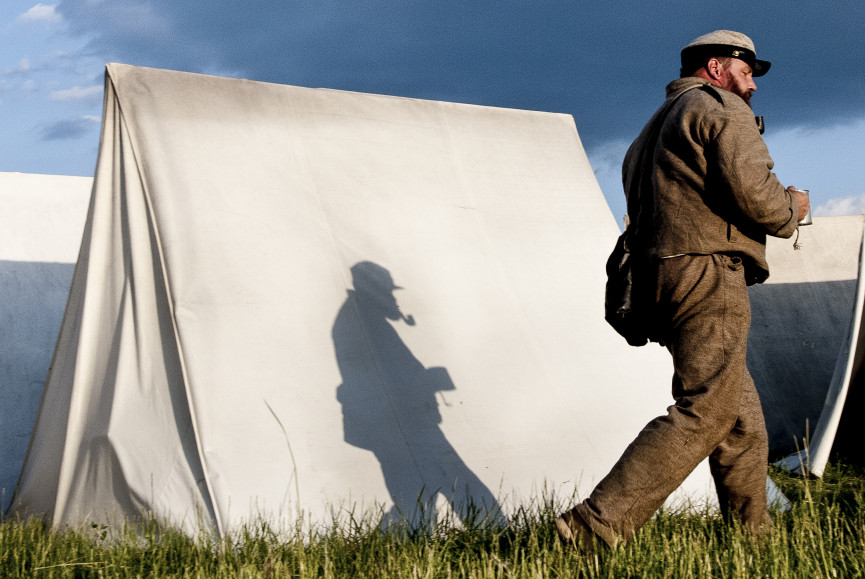
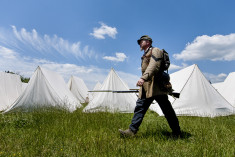
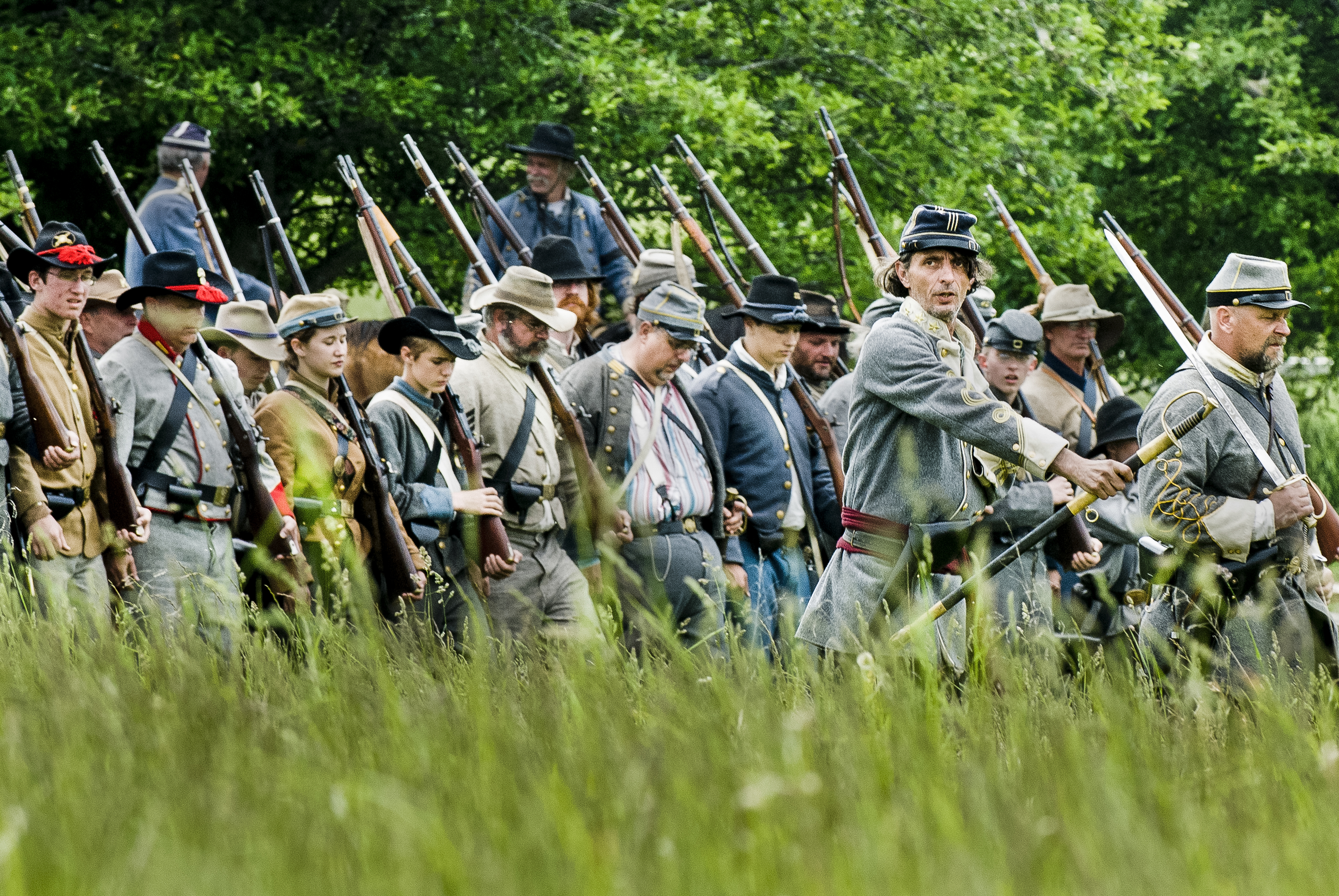
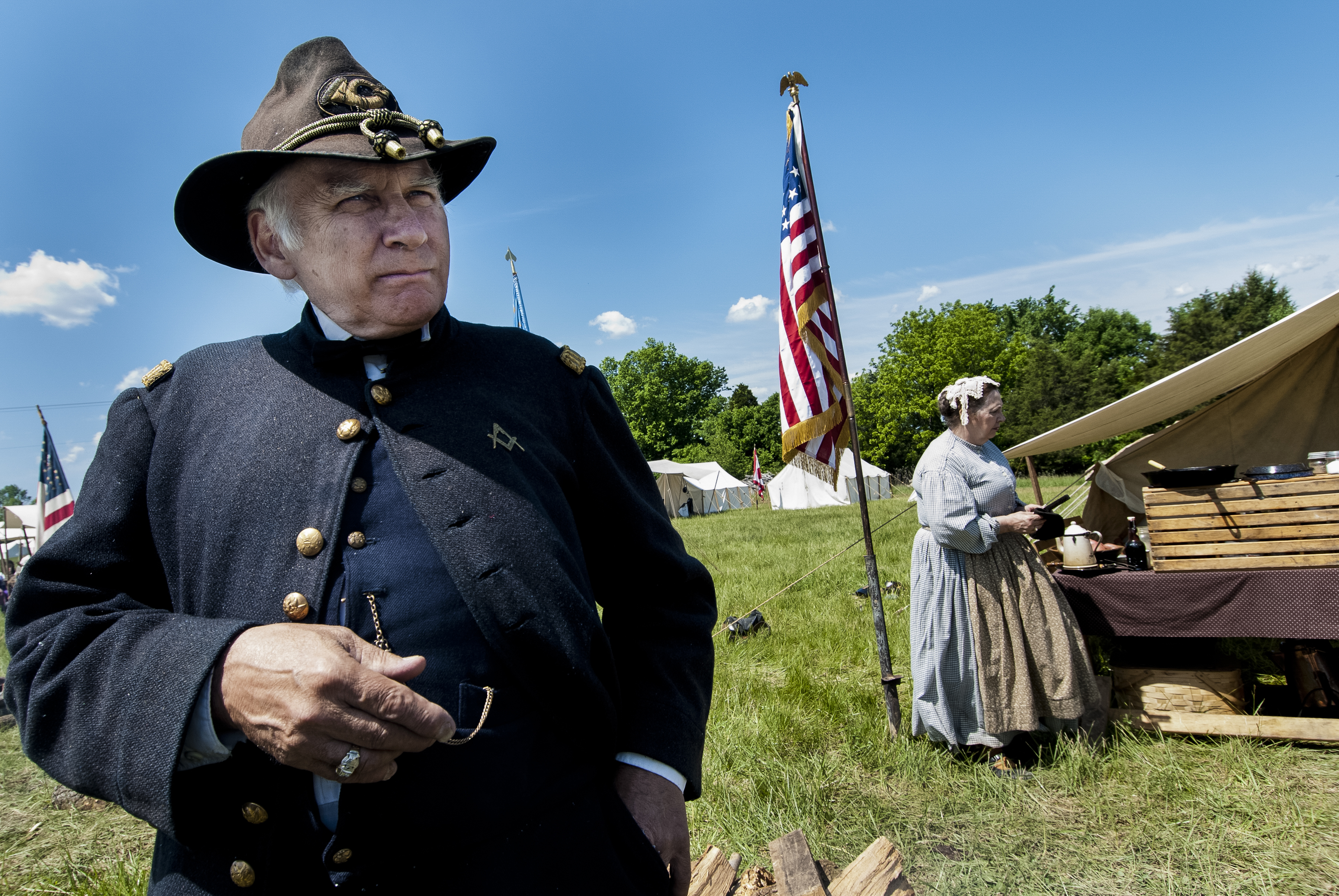
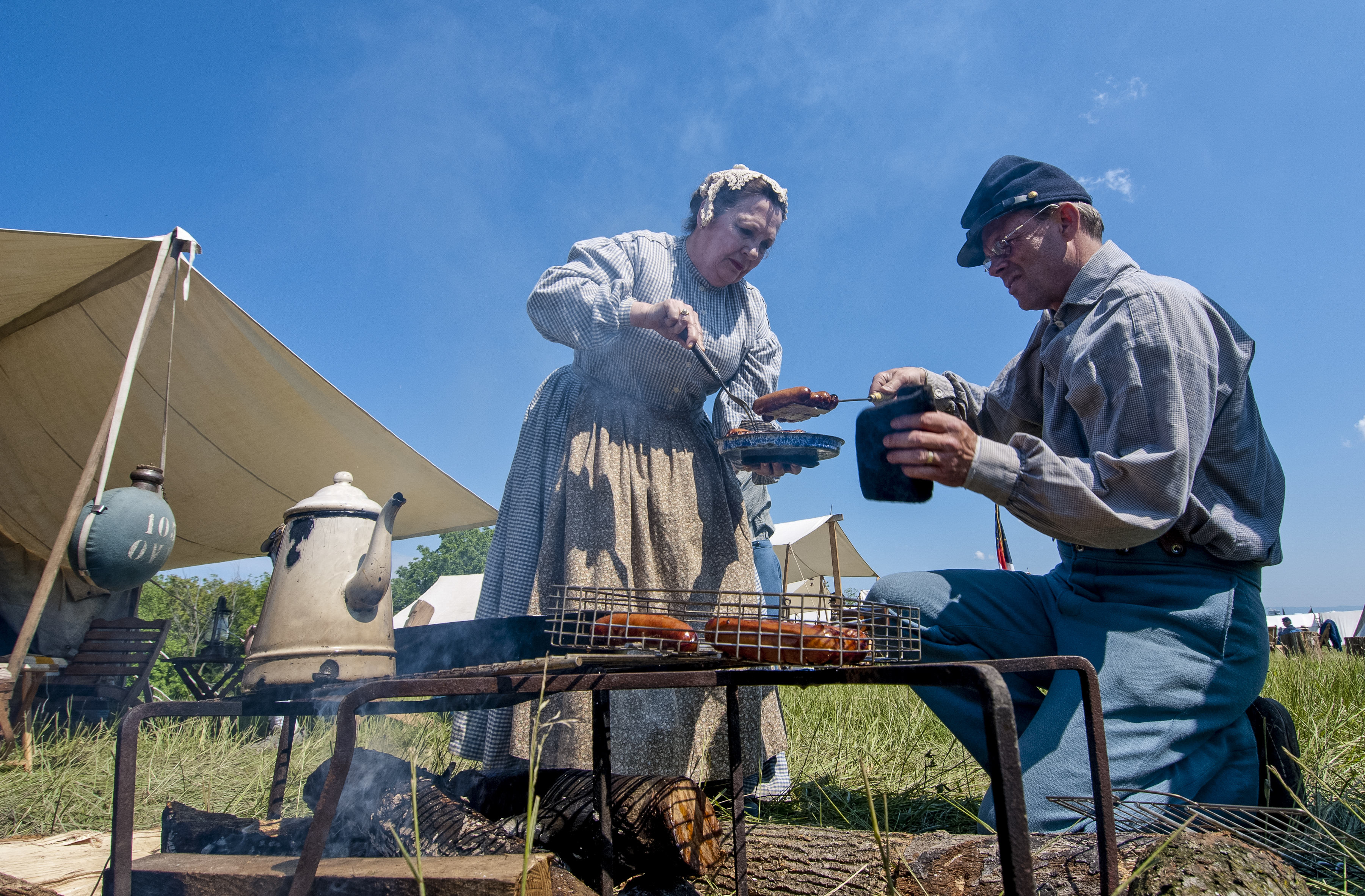
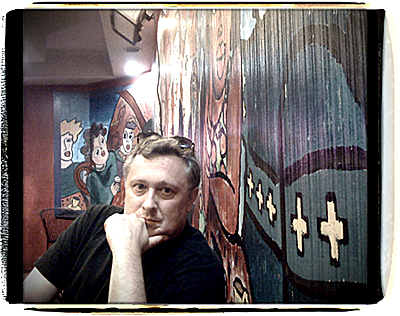 Pete Marovich is a photojournalist based in the Washington D.C. metro area covering the White House and Capitol Hill. He is co-creator of American-Journal Magazine and serves as photo editor.
Pete Marovich is a photojournalist based in the Washington D.C. metro area covering the White House and Capitol Hill. He is co-creator of American-Journal Magazine and serves as photo editor.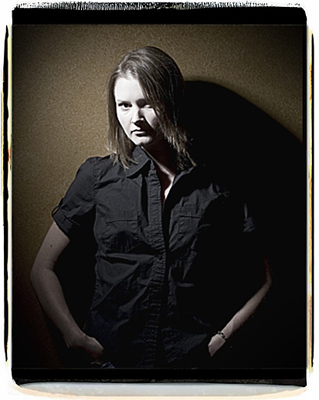 Jenny Jones is the editor and co-creator of American-Journal. She has more than 15 years of experience working for daily newspapers and monthly magazines. She is a freelance writer based in Virginia.
Jenny Jones is the editor and co-creator of American-Journal. She has more than 15 years of experience working for daily newspapers and monthly magazines. She is a freelance writer based in Virginia.
Leave a Reply